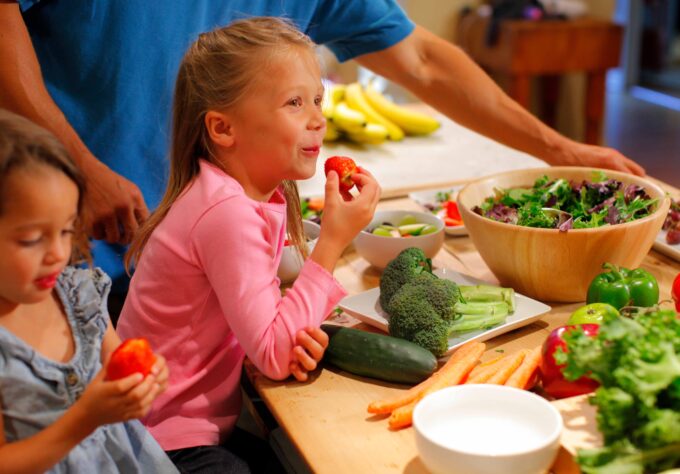Who recalls the joy and excitement of their baby gobbling up all sorts of messy foods? One of my favorite photos of my son is him at 7 months old with a yogurt beard. As parents and caregivers we often work so diligently in those early introductions of solids — whether it’s spoon fed purees or baby led weaning.
But something tends to shift in those toddler years. Our little ones have more awareness of hunger and satisfaction cues and their preferences for flavors emerge. We often see children start refusing those previously accepted foods and showing a liking for specific foods. It can be daunting not to comment on our child’s negative responses to food or trying to persuade them to “just take a bite.” Listed below are some tips to help you navigate these picky eating behaviors.
Understand Hierarchy of Feeding
Ellyn Satter, a dietitian who is recognized as the authority for childhood eating & feeding, provides an amazing framework for the Division of Responsibility for feeding. As parents and caregivers we decide the what, when, and where:
- What is the meal or snack going to be
- When is the time of the meal or snack
- Where is the location of eating- ideally at the table
Satter than goes into the child’s role of feeding, whether and how much:
- Whether they are going to eat
- How much of the meal or snack they are eating
Being mindful of portions of liquid calories
Starting at age one, transitioning to whole milk is best due to its high fat content that is beneficial for brain growth and development. But the portion size changes between an older infant who may be taking 24-32 ounces of breast milk or formula and a 1-year-old who only needs 16 ounces of whole milk. Older toddlers need 16-20 ounces of milk per day.
Fruit juice has been losing traction as a needed beverage for young children. It has a lower nutrition quality compared to eating whole fruit. Young children need 4 ounces or less of 100% fruit juice per day.
Awareness of meal and snack routine
Building on the parents role to decide what, when, and where” with regards to feeding, it’s important for our young ones to anticipate the next meal or snack opportunity.
Having a rough frame work of offering meals and snacks about every 1.5-2.5 hours apart allows our toddlers awareness of their hunger and satisfaction cues.
Young children should start with really short time frames for a meal or snack. By encouraging 5-15 minutes for a snack and 10-30 minutes for a meal, you are helping to establish the division of responsibility for feeding.
Staying Positive
Your child is growing and developing every day. Try to remember that engaging in negative mealtime behaviors can further lead to undesired behavior. For example, your toddler may drop food on the floor or throw their cup. Saying “Don’t do that!” is a response to their action making them more likely to keep up the behavior.
If your child is exploring foods on their tray or plate you can praise them for touching the food, bringing the food to their mouth, and acknowledge tasting a bite.
If a meal or snack opportunity is not going well, you can acknowledge that the next meal or snack is coming up soon. This will help reinforce the routine of coming to the table and eating.
As we know every family situation is different. If you feel that your child is struggling with transitions in table feeding please reach out to your child’s pediatrician. Working with a registered dietitian, psychologist, or speech language pathologist could be beneficial to assess any barriers for feeding.



